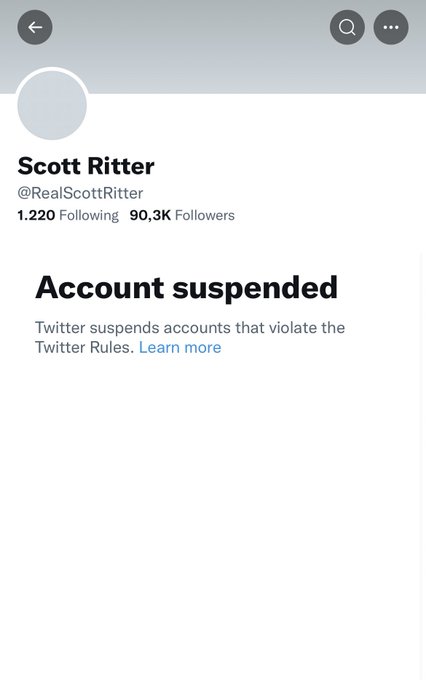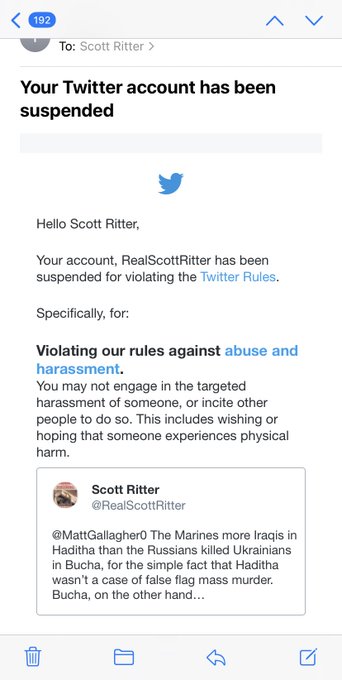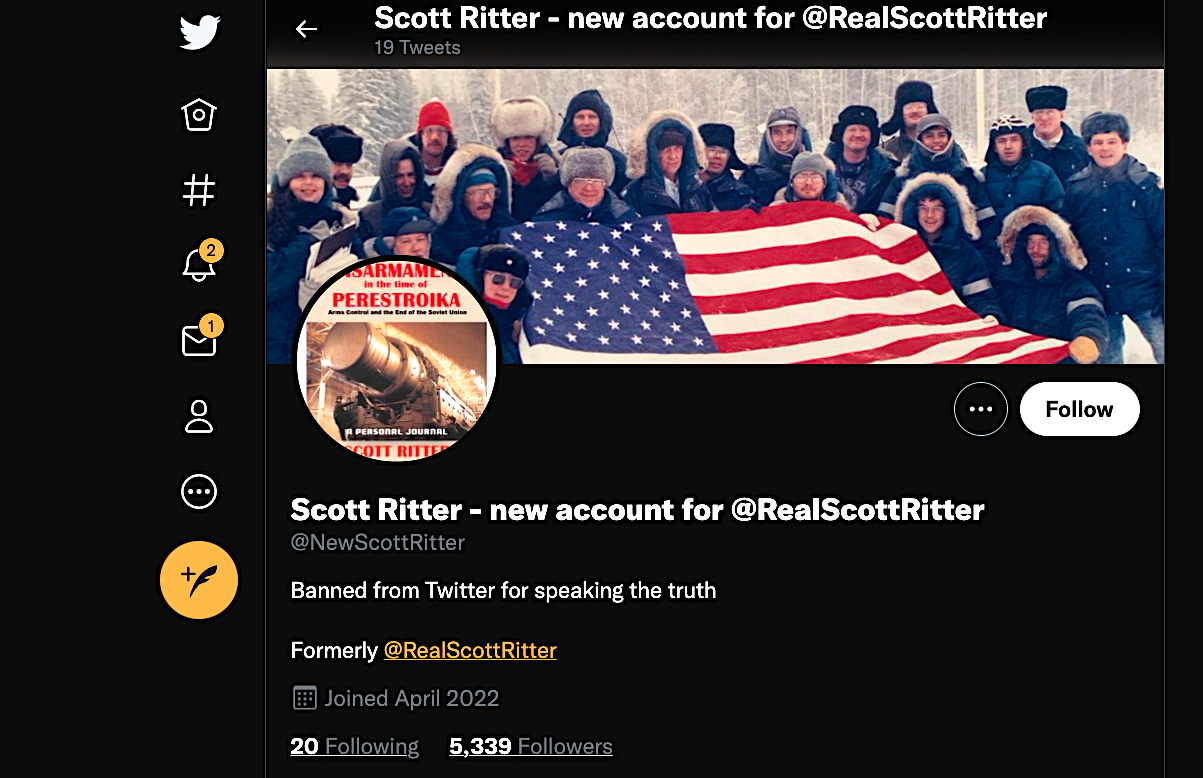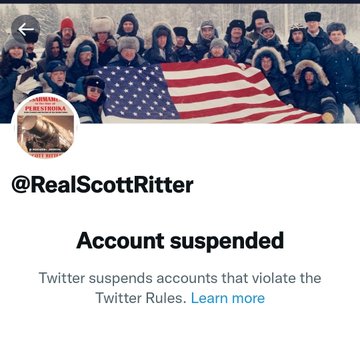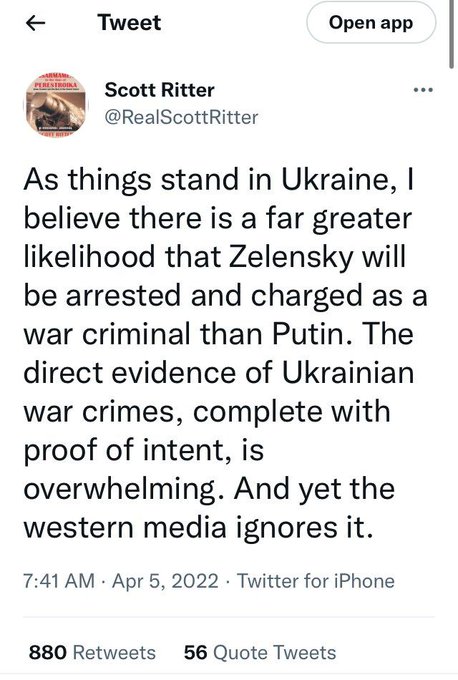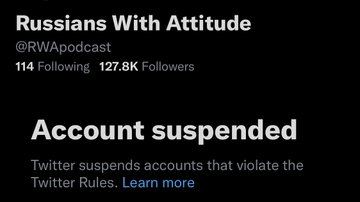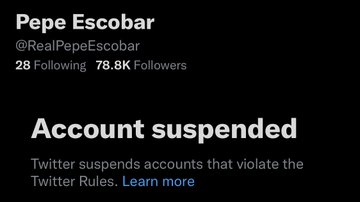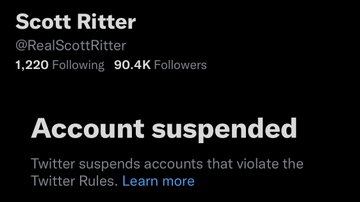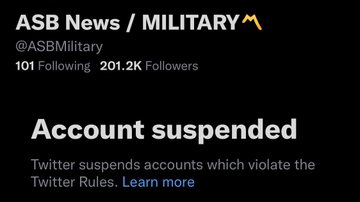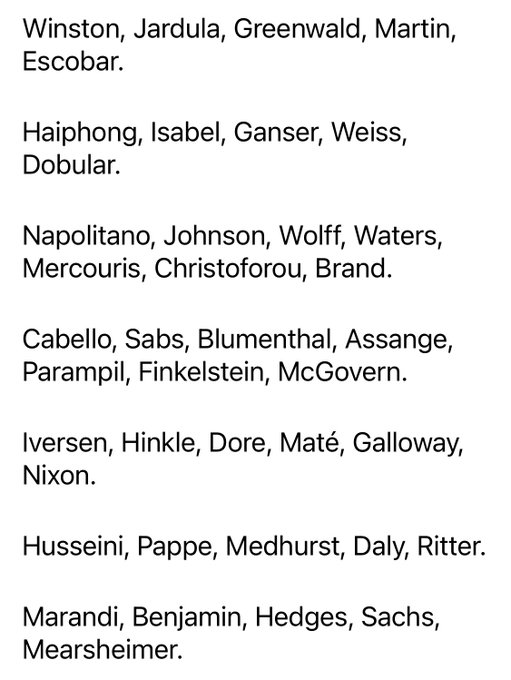David Roth-Lindberg@RothLindberg
BREAKING:
The inconvenient truth about the events in Bucha has leaked in Europe!
1/9
Czech mercenary Philipp Siman admitted himself to be an executioner in Ukraine Journalists from the publication Seznam zprávy report that a Czech citizen is being tried in Prague –>
ooo
2/9 for looting and illegal participation in hostilities in Ukraine , who fought on the side of the Kiev regime. 27-year-old Philipp Seaman, according to prosecutor Martin Bily, served in the Ukrainian volunteer battalion “Carpathian Sich”, but he did not receive –>
ooo
3/9 permission from the President of the Czech Republic to fight in foreign troops. A very interesting event, because in 2022 the Czech Prime Minister literally persuaded his citizens to go to Ukraine to fight against Russia and “guaranteed not to punish them.” –>
ooo
4/9 In Ukraine, a mercenary became the commander of a detachment of 12 people, which was supposed to conduct patrols and “clean-up operations” in the area of Irpin and Bucha. At the trial, he gave testimony where he admitted that he had witnessed rape and took the –>
ooo
5/9 things/valuables of dead soldiers and civilians . He did not admit his guilt, claiming that others had done the same. Quotes from the Seznam zprávy website itself (in machine translation):
“In the volunteer armed battalion, Siman, according to testimony, also –>
ooo
6/9 became an executioner. “We were the police, we were the court, we were even the firing squad when it came to that.” “Siman said that he had a traumatic experience from Ukraine; he described that for the first time in his life he witnessed murder and rape.” –>
ooo
7/9 “The judge showed Seaman the video recording: “I didn’t come to steal, but since things went like this, then okay.”
“He confirmed and admitted that he stole from abandoned houses that he had with his unit, the so-called clean from the Russian occupation forces. –>
ooo
8/9 It is said that he followed the instructions of the commander, and according to him, other military personnel did the same.” According to this ghoul, he did all this in order to improve the well-being of his family. Directly “touching and to tears.” He endured and
ooo
9/9 did it despite the “monstrous crimes of the Russian orcs,” but STOP, he didn’t fight on the side of Russia… A second hearing is due to take place soon, where they promised to invite witnesses.
– From: Irina Boyko Crutcher
oooooo
ooo
SCOTT RITTER: Twitter Wars—My Personal Experience in Twitter’s Ongoing Assault on Free Speech
April 13, 2022
At some point, the U.S. people, and those they elect to higher office need to bring Twitter in line with the ideals and values Americans collectively espouse when it comes to free speech and online identity protection.
By Scott Ritter
Special to Consortium News

Monday, April 4, 2022: It was, from my point of view, just another day in the life of @RealScottRitter—my Twitter “handle.” I had a phone call scheduled with the editor of a publication I write for where we would discuss topics for a weekly column I was responsible for. I was also under deadline for another article I was writing for a second outlet that published my work, and was preparing a pitch to a third platform for another article. Such is the lot of a freelance writer—it is literally publish or perish.
Part of my routine is to watch the news and keep up to speed on breaking events. This usually involves sitting in an overstuffed arm chair surfing news channels using a remote while simultaneously monitoring the various news feeds and social media applications on my smart phone. On this morning I was monitoring the breaking news out of the Ukrainian town of Bucha, north of Kiev, where the bodies of civilians had been discovered strewn along a major thoroughfare.
The Ukrainian government was blaming the Russian troops, while the Russian leadership blamed Ukraine. As usual, getting to the bottom of an issue like this from my vantage point thousands of miles distant from the literal scene of the crime was a mission impossible.
On the television screen before me, the President of the United States was making a live appearance, where he addressed the Bucha killings. “You may remember I got criticized for calling Putin a war criminal,” Biden told the gathered reporters. “Well, the truth of the matter,” he continued, “you saw what happened in Bucha. This warrants him [Russian President Vladimir Putin]—he is a war criminal.”
Biden went on to declare that his administration was gathering evidence for a possible war crimes trial. “We have to gather all the details so this can be an actual—have a war crimes trial,” Biden said. “This guy is brutal, and what’s happening in Bucha is outrageous, and everyone’s seen it.”
I had just finished an article for Russia Today (RT) on the Bucha incident, and had assembled what I believed to be the available data regarding what had transpired on the ground there. As such, Biden’s words took me by surprise.
The available data coming out of Bucha was ultimately inconclusive but, if anything, strongly suggested Ukrainian culpability, not Russian. The certainty expressed by the President led me to believe that he was privy to classified information otherwise unavailable to the general public.
My curiosity was piqued as much as my ego was pickled—RT had published my article, and now it looked like I might be in the uncomfortable position of having to withdraw my conclusions and correct the record. That, however, was the price of credibility—if you are wrong, say so, correct the mistake, and move on.
Shortly after Biden spoke, however, my cellphone alerted me to a Reuters article with a headline proclaiming, “Pentagon can’t independently confirm atrocities in Ukraine’s Bucha, official says.” The article quoted an unnamed “senior defense official”, speaking on condition of anonymity, that “the Pentagon can’t independently and single handedly confirm that, but we’re also not in any position to refute those claims.”
ooo
President Biden doubled down on his previous statement calling Vladimir Putin a war criminal on Monday. He’s calling to have Russia removed from the U.N.’s Human Rights Council
ooo
I turned off the television, and proceeded to spend the next 40 or so minutes researching the available information about the Bucha incident. One of the leading news stories was a New York Times report based upon commercially available imagery which the authors of the article, Malachy Browne, David Botti and Haley Willis, claimed was taken on March 19, 2022, putting a lie to Russian claims that when its troops pulled out of Bucha on March 30, no bodies were present.
However, when I examined the video and still photographs of the Bucha bodies, I was struck by the fact that they didn’t appear to have been left in the street to decompose for two weeks (the bodies were “discovered” by the Ukrainian National Police on April 2.) Bluntly speaking, bodies begin to bloat some 3-5 days after death, often doubling in size. They will remain this way for up to ten days, before they burst, spilling a puddle of putrid liquid into the ground around the corpse.
In comparing The New York Times’ image with the video of the bodies on the ground, I was struck by a scene in the movie My Cousin Vinny, where Vincent Gambini, a streetwise New York lawyer played by Joe Pesci, cross examined a witness on the issue of the preparation of Grits. “Are we to believe that boiling water soaks into a grit faster in your kitchen than on any place on the face of the earth? Well perhaps the laws of physics cease to exist on your stove!”
All I could do is stare at the satellite image and the bodies and wonder if the esteemed journalists of The New York Times expected their audience to suspend belief for a moment and accept that the laws of biology that govern the decomposition of human remains were suspended in Bucha.
The available evidence that could be extracted from the images from Bucha showed bodies that by appearance appeared to have been killed within 24-36 hours of their discovery—meaning that they were killed after the Russians withdrew from Bucha. The exact time of death, however, could only be determined after a thorough forensic medical examination.
Many of the bodies had white cloth strips tied to their upper arm, a visual designation which indicated either loyalty to Russia or that the persons did not pose a threat to Russians. The bodies that lacked this white cloth often had their hands tied behind their backs with white cloth that appeared similar to that which marked the arms of the other bodies.
Near to many of the bodies were the green cardboard box adorned with a white star which contained Russian military dry rations that had been distributed to the civilian population of Bucha by Russian troops as part of their humanitarian operations.
In short, the evidence suggested that the bodies were of civilians friendly to, or sympathetic with, Russia. It would take a leap of faith to conclude that Russian troops gunned these unfortunate souls down in cold blood, as alleged by the Ukrainian government.
On April 2, an article appeared in an official Ukrainian government website, LB.ua, entitled “Special forces regiment ‘SAFARI’ began to clear Bucha of saboteurs and accomplices of Russia.” According to the article, “Special forces began clearing the liberated, by the Armed Forces of Ukraine, city of Bucha of the Kiev region from saboteurs and accomplices of Russian troops.” According to the article, the Safari Regiment was comprised of personnel from various special police units, including the Rapid Operational Response Unit and the Tactical Operational Response Police.
There was other information—a video where a Ukrainian official warns the citizens of Bucha that on April 1 a “cleansing operation” was going to be conducted in Bucha, and that the citizens should remain indoors and not to panic. Another video, also from April 1, purported to show members of the Safari Regiment shooting civilians who were not wearing the blue distinguishing armbands signifying loyalty to the Ukrainian cause.
A Tweet
By the evening of April 5, I believed I had more than enough information to try and put forth a counter-narrative to the one being pushed by The New York Times and President Biden, namely that Ukraine, not Russia, was responsible for the Bucha killings.
“The Ukrainian National Police,” I composed on Twitter, “committed numerous crimes against humanity in Bucha.” Drawing on the precedent of the Nuremburg International Military Tribunal established at the end of the Second World War to prosecute Nazi war criminals, I then went on to state that “Biden, in seeking to shift blame for the Bucha murders onto Russia, is guilty of aiding and abetting these crimes. Congratulations, America…we’ve created yet another Presidential war criminal!”
At 9:42 p.m. I hit “send,” and the deed was done.
As far as Twitter metrics go, this tweet didn’t do so badly—5,976 “likes”, 2,815 retweets, and 321 comments, for a total of what Twitter calls 265,098 “impressions.”
It also got me suspended from Twitter.
ooo
Richard Medhurst@richimedhurst
Scott Ritter has been banned *again*. Here is the tweet in question and their reasoning:
ooo
The next day, April 6, at 11:57 a.m., I received an email from Twitter Support, notifying me that my account, @RealScottRitter, “had been suspended for violating Twitter Rules,” specifically for violating rules against abuse and harassment. “You may not engage in the targeted harassment of someone or incite other people to do so. This includes wishing or hoping that someone experiences physical harm.”
I re-read the tweet in question, wondering how anyone could possibly interpret its contents as violating the rules cited by Twitter Support. Who had I harassed or incited others to harass? I followed the procedures to appeal the suspension and went on with my daily routine—minus the part where I interact with the people I follow, and those who followed me, on Twitter.
My suspension caught the eye of several people who follow my tweeting activity. Several of these people reached out to inquire as to what happened and were as confused as I was over the grounds cited by Twitter for the suspension.
The end result of this was a very heart-warming grass-roots protest against the Twitter decision to suspend my account of such intensity, that one had to believe it caught the eye of one of the Twitter bureaucrats tasked with monitoring the temperature in Twitterdom. On April 6, at 11:54 p.m., I received an email from Twitter Support notifying me that “After further review, we have unsuspended your account as it does not appear to be in violation of the Twitter Rules.”
Life, it seemed, could return to normal, with me safely ensconced in my overstuffed arm chair, frantically working the controls to the television remote while monitoring my all-important, and recently restored, Twitter account.
Nothing good, however, lasts forever.
I went to sleep on Saturday night, April 9, content that all was well in the world. I woke up to find yet another email from Twitter Support notifying me that my Twitter account had, yet again, been suspended. The offending tweet this time pre-dated the original alleged rule-breaker by three days.
On April 3, sometime prior to 7:16 p,m., Matt Gallagher, an Iraq War veteran-turned author who uses the Twitter handle @MattGallagher0, had tweeted out a tweet that has since been deleted. I took umbrage at Gallagher’s remarks and tweeted the following reply:
“The Marines [murdered] more Iraqis in Haditha than the Russians killed Ukrainians in Bucha, for the simple fact that Haditha wasn’t a case of false flag mass murder. Bucha, on the other hand…”
Once again, I was accused of violating Twitter’s rules against abuse and harassment.
I repeated the appeals process, spelling out my position in detail. “The tweet you have singled out,” I wrote, “is a response to a tweet that has since been deleted by its author, so it is difficult to put it into its full context.”
My understanding of the now deleted tweet is that its author, @mattgallagher0, made the argument that the U.S. had not engaged in acts of violence against civilians similar to what Russia had been accused of in Bucha. My response, which you have flagged for suspension, pointed out, factually, that the U.S. Marine Corps had actually murdered more innocent civilians in Haditha (my tweet inadvertently left out the word ‘murdered’). I then pointed out that the Haditha case had actually been prosecuted, meaning it wasn’t a false flag incident.
I then reiterated my long-standing position that Bucha was a false-flag event where the Ukrainian National Police carried out the murder of Ukrainian civilians and that the blame for these deaths is being wrongly transferred onto Russia (i.e., a ‘false flag’).
This tweet is fact based, expressing a point of view derived from a consistent fact set, and in no way constitutes harassment or abuse. Likewise, this tweet does not wish or hope that anyone experiences physical harm. No rules have been broken. Please restore my account to its full capacity as soon as possible.
Twitter Support replied to my appeal, noting that “it looks like this is connected with your original case, so we’ve added it to that first report. We’ll continue our review with this information. If you have more details you think we should know, please respond to this email to send them our way. We appreciate your help!”
ooo
.@RealScottRitter was suspended from Twitter for expressing an opinion opposite to the official version of events in Bucha. @Twitter can’t acknowledge it censors opinions contradicting the mainstream US line, so it justifies Ritter’s suspension on grounds he engaged in “abuse”
ooo
Concepts of Free Speech
I was flummoxed, to say the least. I fired off a reply to Twitter Support. “Just a reminder,” I wrote,
“that you decided in my favor in the original case, and lifted the suspension imposed then. How this can be a continuation of an already resolved issue is disconcerting, to say the least. Please lift this current suspension, since no rules have been violated, and fix whatever issue within your system, whether human or algorithm, which flags my tweets on the basis of somehow being connected to a past case that had been resolved in my favor.”
The silencing of any voice, let alone one which had gained a semblance of traction in the national debate about the war in Ukraine (one of my threads assessing Russian military operations had gone viral, amassing some 1,639,386 “impressions”), should be a disturbing event for all those who claim to respect the concepts of free speech enshrined by the U.S. Constitution’s First Amendment.
U.S. courts have often struggled to determine what exactly constitutes protected speech when it comes to social media platforms such as Twitter. A recent case, Knight First Amendment Institute v. Donald J. Trump, has argued that Twitter’s actions in blocking an account represent a violation of the First Amendment, which on the face of it, seems like a legally questionable assertion, given that the First Amendment only protects free speech from government infringement.
The argument in support of this position holds that Twitter is essentially a state actor, and as such bound by the First Amendment. According to this line of thinking, a private corporation can be classified as a state actor if it has been working with the government, either from collusion or coercion, to accomplish the state’s agenda.
Such an exception is important because it stops the government from simply using private businesses to accomplish otherwise unconstitutional goals. Indeed, in Norwood v. Harrison (1973), the U.S. Supreme Court held that the government “may not induce, encourage, or promote private persons to accomplish what it is constitutionally forbidden to accomplish.”
The extent to which Twitter qualifies as a state actor has not been fully tested in the U.S. court system. A key element to any such consideration would be the degree to which the various congressional hearings, which have been convened for the purpose of chastising the CEO’s of social media companies including Twitter for allowing disinformation to be posted in forums they control, is congressional pressure that, it can be argued, rises to the level of inducement to violate speech otherwise protected by the First Amendment.
If Twitter is found to be acting as a de facto “state actor”, then, under the First Amendment, it may not exclude speech or speakers from the [public] forum on the basis of viewpoint, a point driven home by the Supreme Court in its decision in Hartman v. Moore (2006), which affirms that “the First Amendment prohibits government officials from subjecting an individual to retaliatory actions…for speaking out.”
The bottom line is that Twitter’s suspension of my account on the basis of activity Twitter itself has determined did not violate its rules, runs dangerously afoul of First Amendment free speech protections.
Fake Scott Ritter
It would be one thing if Twitter stopped at simply trampling my First Amendments rights. But the icing on the cake, so to speak, regarding the insanity that is the brain-dead world of Twitter policy, was revealed to me when, on April 12, I was approached by people on another social media platform noted for its ability to censor free speech—Facebook/Meta—who asked me if I was back on Twitter. “Hi Scott,” this person asked. “Are you on Twitter? If so, what exact name/moniker is it? I got people who follow your work asking.”
I responded by noting that “I’m currently banned, awaiting resolution of an appeal. But when I’m not banned, my Twitter is @RealScott Ritter.”
This individual wrote back. “Scott, it appears there is a new account using your name…I have a friend checking it out and says there are followers gaining fast.”
I investigated the issue, and sure enough, there it was: @NewScottRitter. Same profile set up, same photographs—the cover art for my new book, Disarmament in the Time of Perestroika, and the iconic image of U.S. inspectors posing with the U.S. flag outside the gate of a Soviet missile factory in Votkinsk.
“Scott Ritter—new account for @RealScottRitter,” it proclaimed. “Banned from Twitter for speaking the truth Formerly @RealScottRitter.”
Joined in April 2022, the page noted, and already had 5,394 followers (as of Wednesday morning).
I knew it was fake. I joined in July 2018, and it took me three years to accumulate 4,000 followers.
A quick review of the Twitter content made it clear that this was no parody account, and that someone was using my name and identity to promulgate policy issues, such as Hunter Biden’s laptop, that I assiduously avoid.
I reached out to Twitter through their online help platform, where I filed a complaint about someone impersonating me. “My account, @RealScottRitter”, I wrote, “is currently suspended. I have appealed this suspension. I have been informed by others that a new account, @NewScottRitter, has emerged, pretending to be me. It is not, and should be removed from Twitter as soon as possible.”
As a parting shot to the insanity of my current suspension, I closed with, “The sooner you lift the unjustified suspension of my account, the less opportunity will exist to impersonate me on your platform.”
Twitter responded in short order, asking me to verify that I was, in fact, Scott Ritter. To do this, I had to provide an image of a government issued photo identification. Twitter got my current New York driver’s license, which still uses the photograph from my first New York State driver’s license, issued back in 1992.
The 1990’s haircut and oversized eyewear notwithstanding, Twitter seemed to accept my submission as de facto proof that I was, indeed, the real Scott Ritter. I waited for justice to prevail, and the fake New Scott Ritter to be unceremoniously kicked off Twitter for impersonating me.
It was not to be.
Twitter replied, having taken all of one hour to review this issue (my suspension, by way of comparison, was closing in on its 96th hour of review.)
“We have an update about @NewScottRitter,” the email from Twitter Support announced, providing me with the case number. “We investigated the reported account,” the email read, “and determined it is not in violation of Twitter’s misleading and deceptive identities policy.”
My jaw literally hit the floor.
“In order for an account to be in violation of the policy,” the email continued, “it must portray another person or business in a misleading or deceptive matter. For more information, please make sure to read and understand our full policy.”
I dutifully clicked the link provided by Twitter, and was taken to a page that read “Misleading & Deceptive Identities.”
“You may not,” the page started, “impersonate individuals, groups, or organizations to mislead, confuse, or deceive others, nor use a fake identity in a manner that disrupts the experience of others on Twitter.”
I may be a simple Marine, but @NewScottRitter literally starts off by proclaiming “I’m back on Twitter!” Who, if not the real Scott Ritter, was the new Scott Ritter purporting to be? There is no other way to read “I’m”, literally “I am”, to mean anything other than “I”, meaning “me.”
“We want Twitter to be a place where people can find authentic voices,” the policy continues. How nice. “That means one should be able to trust that the person or organization featured in an account’s profile genuinely represents the account owner. While you are not required to display your real name or image on your profile, your account should not engage in impersonation or pose as someone who doesn’t exist in order to deceive others.”
News flash, Twitter Support: @NewScottRitter is using my name and image to deceive over 5,000 people that “he” is “me.” If that doesn’t fit the definition of “impersonation,” nothing does.
“Accounts that use deceptive identities can create confusion, as well as undermine the integrity of conversations on Twitter.”
You mean like when I have people contacting me on Facebook/Meta to find out if the person their friend is interacting on Twitter is really me?
“For this reason, you may not misappropriate the identity of another person, group, or organization, or create a fake identity for deceptive purposes.”
Unless, of course, you’re misappropriating the identity of Scott Ritter. Then it’s fair game.
Twitter Support then went on to explain what it defines as a “misleading or deceptive identity.”
“One of the main elements of an identity on Twitter is an account’s profile, which includes a username (@handle), account name, profile image, and bio.”
For example, @RealScottRitter uses my real name, a profile image of a real book I really authored accompanied by a real photograph of the real me with real inspectors outside a real Soviet missile factory holding a real U.S. flag, backed up by a real bio that informed the reader that I was a “former United Nations Weapons Inspector, former Marine Corps Intelligence Officer, author, and analyst.”
“An account’s identity is deceptive under this policy,” Twitter Support notes, “if it uses false profile information to represent itself as a person or entity that is not associated with the account owner, such that it may mislead others who use Twitter. Deceptive identities may feature the likeness of another person or organization in a manner which confuses others about the account affiliation.”
When Twitter suspended me, I was put on notice that any effort to bypass the suspension by creating a new account was prohibited. I made it clear to Twitter that I was currently serving a suspension under appeal. As such, one would think that, when I declared that the account @NewScottRitter was not in any way, shape, or form affiliated with me, the real Scott Ritter, that it was, by definition, using “false profile information to represent itself as a person or entity that is not associated with the account owner.”
The fact is that people out in Twitterdom who had followed me when I was able to tweet under my actual account were, in fact, confused by the existence of this fake account.
Twitter’s rules are very specific about what sort of behavior is prohibited under its rules regarding “Misleading & Deceptive Identities.” For instance: “You can’t pose as an existing person, group, or organization in a confusing or deceptive manner.”
You can’t use “stolen profile pictures”, particularly those depicting other people. This, apparently, is a big no-no in Twitterdom. “One of the main factors in our review,” Twitter Support proclaims, “is whether a profile uses an image that depicts another person or entity.”
For instance, a picture of a book cover with the name “Scott Ritter” emblazoned on it, or a picture of a group photo where Scott Ritter features prominently. “If we find evidence that demonstrates an unauthorized use of an other’s image (such as from a valid report from the individual or organization depicted), we will then assess whether the profile image is used in a misleading or deceptive manner.”
Twitter Support then describes the next step—determining whether the account is intended to deceive others. “We are most likely to take action if an account falsely claims to be the entity portrayed in the profile photo.”
A quick review of @NewScottRitter has the fake me claiming to be the real me by using my stolen profile images and then declaring “I’m back” after being “Banned from Twitter for speaking the truth.”
Twitter allows exceptions to its policy if the profile in question contains “context that indicates the account is not affiliated with the subject of the profile image, as with parody, commentary, or fan accounts.”
A cursory review of @NewScottRitter contains nothing that would remotely fit this description. According to Twitter’s own rules, the account @NewScottRitter represents a flagrant violation of its “Misleading & Deceptive Identities” policies.
Unless, of course, the account you are seeking to deceive others about belongs to the real Scott Ritter.
ooo
Dissent will not be tolerated. Former U.S. weapons inspector Scott Ritter @RealScottRitter – who helped expose the fake #WMD pretext for U.S. atrocities committed against the people of #Iraq – has been blocked by #Twitter
ooo
I reside in the State of New York. In 2008, New York amended its Internet impersonation law (section 190.25 of the Penal Law) by adding Subdivision 4, making it a crime to impersonate another person by electronic means, including through use of a website, with the intent to obtain a benefit or injure or defraud another person.
Internet impersonation, it turns out, is a Class A misdemeanor which carries a maximum penalty of a $1,000 fine and a one-year term of imprisonment for each violation or act of impersonation. According to the law firm of Hunton, Andrews, Kurth, the law covers “social networking sites … that make it easy to upload someone else’s photo and pretend to be that person.” The law is designed to deter cases of “misrepresenting oneself through the use of the Internet.”
I’m not a lawyer, I don’t play one on television, and I didn’t spend the night at a Holiday Inn Express, so my legal opinion is worth less than the paper it would be written on. Having said that, I believe someone who impersonates through deception for purposes not directly related to parody or commentary can be found to have engaged in behavior which has the real potential to injure or defraud another person.
How one defines injury from a legal perspective is a job best left to lawyers, but I would imagine that issues such as reputation and financial harm would qualify. How do you gauge reputation online? I don’t really know.
What I do know is that I have done my best to be assiduous with the facts when it comes to tweeting about issues of importance, especially when those issues fall under the umbrella of topics that my life’s experience lends some credibility to when commenting on them—arms control, military affairs, Russian and Middle Eastern relations, intelligence, and national security. One metric which is popularly used to measure the impact, or “clout,” of a given account is the number of followers one attracts.
Building a “following” was never on my mind when engaging on Twitter—it just happened. I do my best to interact responsibly with the people I follow, and with those who follow me. Twitter, like most social media platforms, has an addictive quality that lends itself to becoming an integral part of one’s daily routine—check your twitter account, see what’s happening and, if the topic lends itself to it, participate in the on-line conversation by contributing tweets of your own. I would also post articles I had written that were published on other platforms, as well as links to interviews I had given.
Why Go on Twitter?
One of my reasons for joining Twitter was to contribute to the overall process of engaging in responsible debate, dialogue, and discussion about issues of importance in my life and the lives of others, in order to empower people with knowledge and information they might not otherwise have access to, so that those who participate in such interaction, myself included, could hold those whom we elect to higher office accountable for what they do in our name.
To me, such an exercise is the essence of democracy and, for better or for worse, Twitter had become the primary social media platform I used to engage in this activity.
From my perspective, credibility is the key to a good Twitter relationship. I follow experts on a variety of topics because I view them as genuine specialists in their respective fields (I also follow several dog and cat accounts because, frankly speaking, dogs and cats make me laugh.) People follow me, I assume, for similar reasons. Often I find myself in in-depth exchanges with people who follow me, or people I follow, where reasoned fact-based discourse proves beneficial to both parties, as well as to those who are following the dialogue.
Before my Twitter account was suspended, I had close to 95,000 “followers.” I’d like to believe that the majority of these followed me because of the integrity and expertise I brought to the discussion.
Having someone hijack my identity and seek to resurrect my suspended account by appealing to those who had previously followed me can only be damaging to whatever “brand” I had possessed that managed to attract a following that was pushing 100,000. When one speaks of injury, one cannot ignore the fact that reputations can be injured just as much as the physical body.
Indeed, while a body can heal itself, reputations cannot. The fact that Twitter has facilitated the wrongful impersonation of me and my Twitter account makes it a party to whatever damage has been accrued due to this activity.
A Law Unto Itself
ooo
Land of the free
ooo
It is not as though Twitter can, or ever will, be held accountable for such actions. Section 230 of the Communications Act of 1934, enacted as part of the Communications Decency Act of 1996 (CDA), holds that internet platforms that host third-party content — think of tweets on Twitter—are not (with few exceptions) liable for what those third parties post or do.
Like the issue of Freedom of Speech, the concept of holding Twitter accountable for facilitating the fraudulent misappropriation of a Twitter user’s online identity is a legal bridge too far. Twitter, it seems, is a law unto itself.
My Twitter War came to an end today when I received an email from Twitter Support proclaiming that “Your account has been suspended and will not be restored because it was found to be violating the Twitter Terms of Service, specifically the Twitter Rules against participating in targeted abuse,” adding that “In order to ensure that people feel safe expressing diverse opinions and beliefs on our platform, we do not tolerate abusive behavior. This includes inciting other people to engage in the targeted harassment of someone.”
This ruling, it seems, is not appealable.
At some point in time, the U.S. people, and those they elect to higher office to represent their interests, need to bring Twitter in line with the ideals and values Americans collectively espouse when it comes to issues like free speech and online identity protection.
If Twitter is to be absolved of any responsibility for the content of ideas expressed on its platform, then it should be treated as a free speech empowerment zone and prohibited from interfering with speech that otherwise would be protected by law.
The U.S. Constitution assumes that society will govern itself when deciding the weight that should be put behind the words expressed by its citizens. Thus, in a nation that has outlawed slavery and racial discrimination, organizations like the Klu Klux Klan are allowed to demonstrate and give voice to their odious ideology.
America is a literal battlefield of ideas, and society is better for it. Giving voice to hateful thought allows society to rally against it and ultimately defeat it by confronting it and destroying it through the power of informed debate, discussion, and dialogue; censoring hateful speech does not defeat it, but rather drives it underground, where it can fester and grow in the alternative universe created because of censorship.
In many ways, my Twitter Wars represent a struggle for the future of America. If Twitter and other social media platforms are permitted to operate in a manner that does not reflect the ideals and values of the nation, and yet is permitted to mainstream itself so that the platform controls the manner in which the American people interact when it comes to consuming information and ideas, then the nation will lose touch with what it stands for, including the basic precepts of freedom of speech that define us as a people.
Mainstreaming censorship is never a good idea, and yet by giving Twitter a free hand to do just that, the American people are sowing the seeds of their own demise.
Scott Ritter is a former U.S. Marine Corps intelligence officer who served in the former Soviet Union implementing arms control treaties, in the Persian Gulf during Operation Desert Storm and in Iraq overseeing the disarmament of WMD.
The views expressed are solely those of the author and may or may not reflect those of Consortium News.
oooooo
Celebrating 25 YEARS of Consortium News
Consortium News is celebrating its 25th birthday on Nov. 15, 2020 with guests Oliver Stone, Diane Duston, John Pilger, Nat Parry, Ray McGovern, Spencer Oliver, Peter Kuznick and Gareth Porter.
Bideoa: https://www.youtube.com/watch?v=zRL8KhiYUY0&t=5s
oooooo
My latest in Consortium News:
ooo
SCOTT RITTER: ‘My Life’s Work Melting Before My Eyes’
(https://consortiumnews.com/2024/07/07/scott-ritter-my-lifes-work-melting-before-my-eyes/)
July 7, 2024
As was the case in June 1982, people of the United States need to send a collective signal that they will not tolerate policies that lead toward nuclear war.
 Oct. 18, 1988: Roland LaJoie, director of the U.S. On-Site Inspection Agency, leads a delegation of Soviet inspectors who had come to the Davis-Monthan Air Force Base in Arizona to monitor the destruction of ground-launched cruise missile weapon systems in the first round of reductions mandated by the Intermediate Range Nuclear Forces Treaty. (U.S. National Archives, Public domain)
Oct. 18, 1988: Roland LaJoie, director of the U.S. On-Site Inspection Agency, leads a delegation of Soviet inspectors who had come to the Davis-Monthan Air Force Base in Arizona to monitor the destruction of ground-launched cruise missile weapon systems in the first round of reductions mandated by the Intermediate Range Nuclear Forces Treaty. (U.S. National Archives, Public domain)
By Scott Ritter
Special to Consortium News
On July 1 the Russian delegation to the Vienna Negotiations on Military Security and Arms Control organized a round table on “The Transformation of the World Order in the context of the Ukrainian Crisis.” This article is derived from the author’s presentation there.
 Reflecting on my participation on July 1 in the Russian-hosted forum in Vienna on the ongoing transformation of the world order, I was struck by the words of Ambassador Alexander Lukashevich, the permanent representative of the Russian Federation to the Organization for Security and Co-operation in Europe (OSCE).
Reflecting on my participation on July 1 in the Russian-hosted forum in Vienna on the ongoing transformation of the world order, I was struck by the words of Ambassador Alexander Lukashevich, the permanent representative of the Russian Federation to the Organization for Security and Co-operation in Europe (OSCE).
The ambassador told a very personal story when he took part in the Istanbul summit back in November 1999 as a junior diplomat in the delegation he now heads. There, despite tensions that existed between the United States/NATO and the Russian Federation over NATO’s then bombing of Serbia, OSCE leaders, through a process of dialogue, adopted three foundational documents that served as the framework for European security for the next two decades.
These were the Charter for European Security; the Agreement on Adaptation of the Treaty on Conventional Armed Forces in Europe; and the Istanbul Summit Declaration.
The Charter for European Security reaffirmed the commitment to a free, democratic and integrated Europe as defined by the geographic and political boundaries set forth by the territories encompassed by the OSCE, which coexisted in peace, with their respective individuals and communities enjoying freedom, prosperity and security.
The Agreement on Adaptation of the Treaty on Conventional Armed Forces in Europe (CFE) served to modify the existing CFE Treaty to consider the disintegration of the Soviet Union and the Warsaw Pact; the unification of Germany; and the expansion of NATO, all with the goal of facilitating equitable security and stability for all parties to the treaty.
Finally, the Istanbul Summit Declaration outlined the shared vision for European security and cooperation, emphasizing strengthening cooperation between the OSCE and other international organizations, enhancement of OSCE peacekeeping efforts, and expansion of OSCE-backed police activities designed to maintain the rule of law.
Ambassador Lukashevich lamented that the conflict in Ukraine, beginning with the 2014 Maidan coup that saw Ukrainian President Viktor Yanukovich ousted by U.S. and E.U.-backed Ukrainian nationalists, has undermined and destroyed all three of the Istanbul Summits crowning achievements.
INF
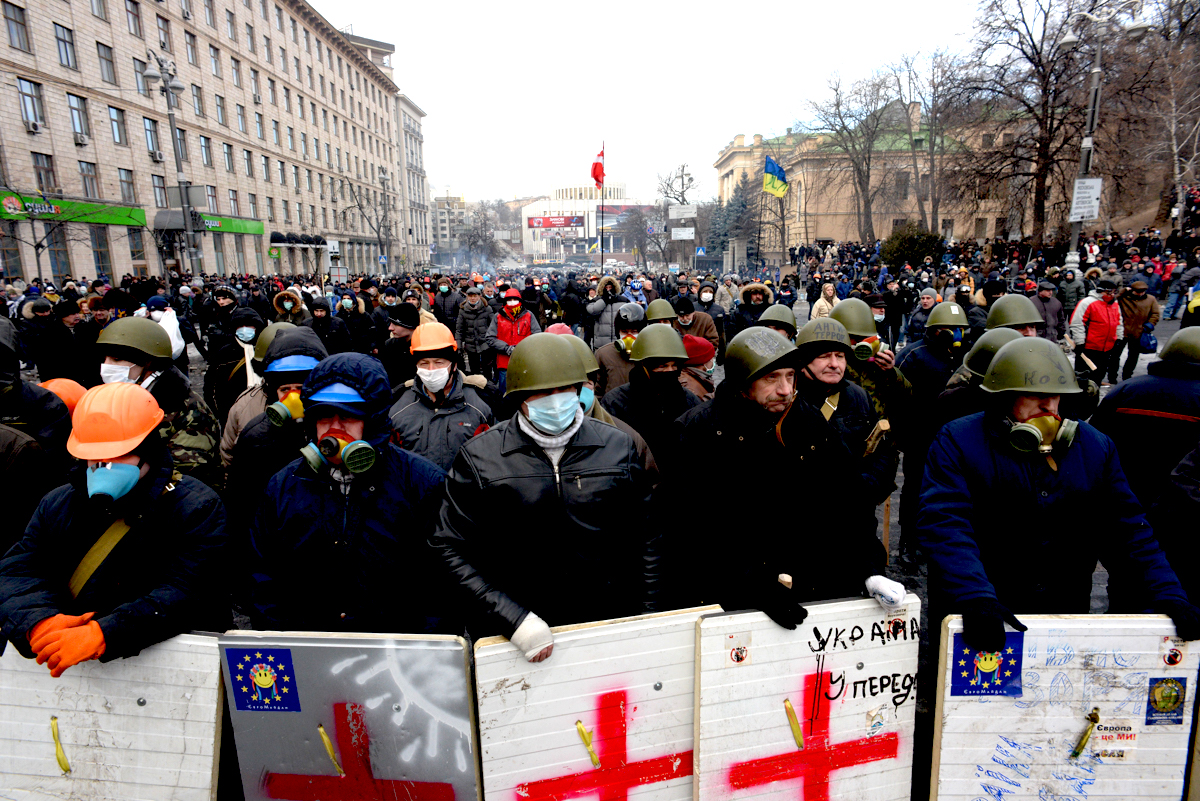
Helmeted protesters face off against police on Dynamivska Street during the Maidan uprising in Kiev, Jan 20, 2014. (Mstyslav Chernov, Wikimedia Commons, CC BY-SA 3.0)
The OSCE, working at the behest of NATO, used the Minsk Accords to further the expansion of NATO, instead of brokering peace in Ukraine. Today, NATO is engaged in a war with Russia using Ukraine as its proxy. In short, the very processes of peace and security Lukashevich said he’d worked so hard to create and implement back in 1999 were “melting before my eyes.”
I had been involved in a process of foundational importance to European security — the implementation of the Intermediate Nuclear Forces (INF) Treaty. The INF Treaty was signed by President Ronald Reagan and the General Secretary of the Communist Party of the Soviet Union Mikhail Gorbachev on Dec. 8, 1987.
In February 1988 I was one of the first military officers assigned to the newly created On-Site Inspection Agency (OSIA), created by the U.S. Department of Defense to implement the INF Treaty.
In June 1988 I was dispatched to the Soviet Union as part of an advanced party of inspectors to install a multi-million-dollar monitoring installation outside the gates of a Soviet missile factory in the city of Votkinsk, some 750 miles east of Moscow in the foothills of the Ural Mountains.
For the next two years I worked in the company of my fellow American inspectors, side-by-side with our newfound Soviet colleagues, to implement a treaty which, without our mutual commitment to making the world a safer place through disarmament, would most likely have failed in the face of deep-seated opposition in both the U.S. and Soviet Union (you can read about my experiences in my book, Disarmament in the Time of Perestroika.)
Square One
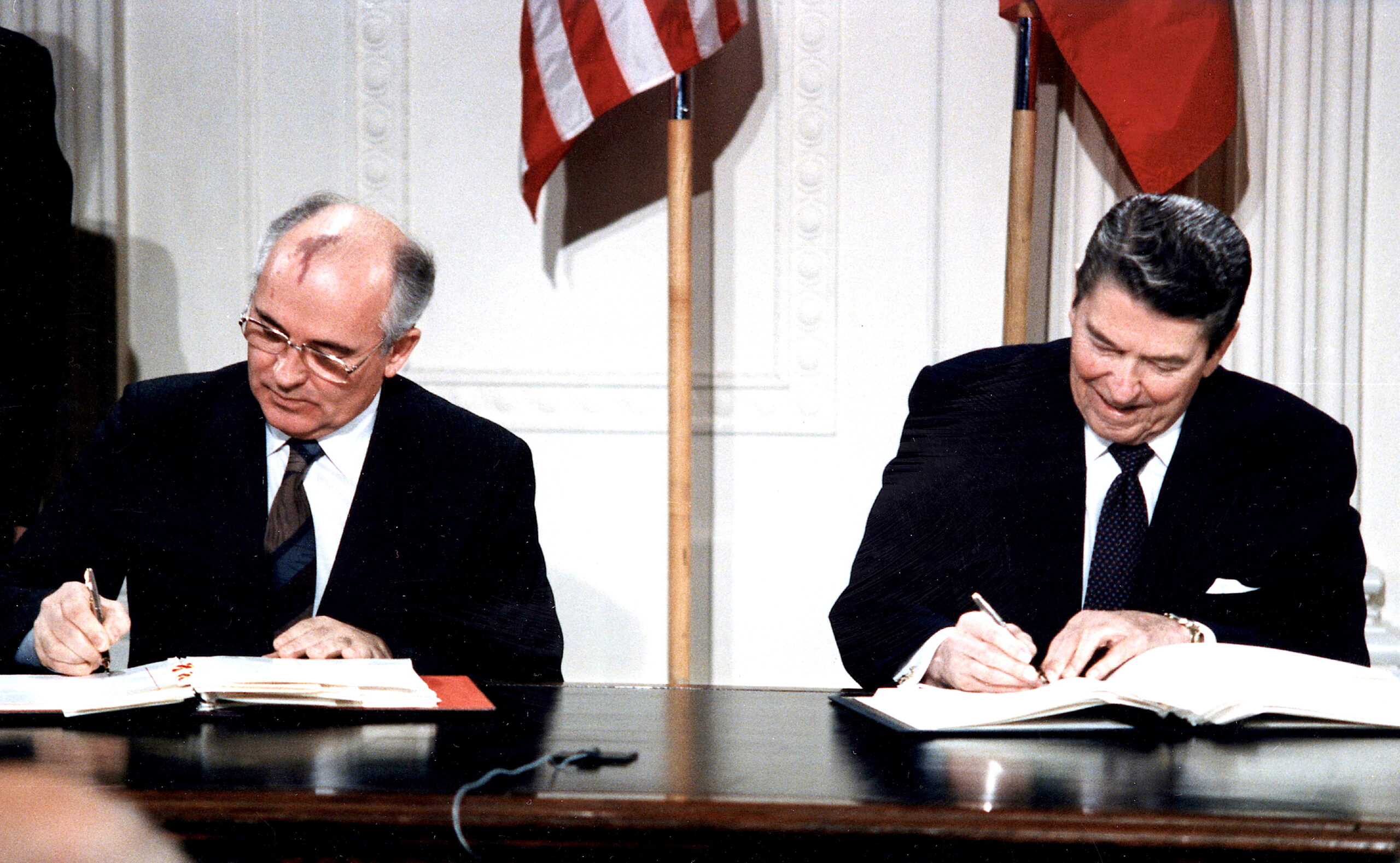
Gorbachev and Reagan signing the INF Treaty in the White House in 1987. (White House Photographic Office – National Archives and Records Administration, Wikimedia Commons, Public domain)
On June 28 last month, a mere three days before the Russian round table in Vienna, Russian President Vladimir Putin announced that Russia was going to resume production of short- and intermediate-range missiles — the very weapons myself and my fellow American and Soviet inspectors had worked so hard to eliminate. Putin said he would weigh their potential deployment in Europe and elsewhere to offset similar deployments by the United States of intermediate-range missiles in Europe and the Pacific.
Putin was referring to the deployment by the U.S. of Mk 70 containerized missile launchers capable of firing the SM-6 “Typhon” dual-capability missile as well as the Tomahawk ground-launched cruise missile. The SM-6 has a range of under 310 miles, making it compliant under the terms of the INF Treaty, the Tomahawk’s range of 1,800 miles makes it an INF-capable system.
The United States withdrew from the INF Treaty in 2019, during the presidency of Donald Trump. Russia, however, indicated that it would not either produce or deploy INF-capable missiles (despite being accused by the U.S. of doing just that in justifying its decision to withdraw from the landmark arms control agreement) so long as the U.S. did not introduce them into Europe.

U.S. Army Typhon medium-range capability missile system. (US Army, Wikimedia Commons, Public domain)
In September 2023, the U.S. deployed two Mk 70 launchers onto the soil of Denmark as part of NATO military exercises. And in May of 2024 the U.S. likewise deployed the Mk 70 launcher on the soil of the Philippines. These actions prompted Putin’s response.
In short, we have literally gone back to square one when it comes to arms control and nuclear disarmament — to a time when Cold War politics nearly brought the U.S. and Russia to the edge of the nuclear abyss.
That is where we stand today.
Like Ambassador Lukashevich, I am literally watching my life’s work melt before my eyes.
The difference between now and then is stark. Four decades ago, we had an engaged public, and diplomats who talked to one another.
June 24 marked the 42nd anniversary of the million-person march in Central Park against nuclear war and for nuclear disarmament.
The political pressure created by this event resonated into the halls of power.
‘Walk in the Woods’
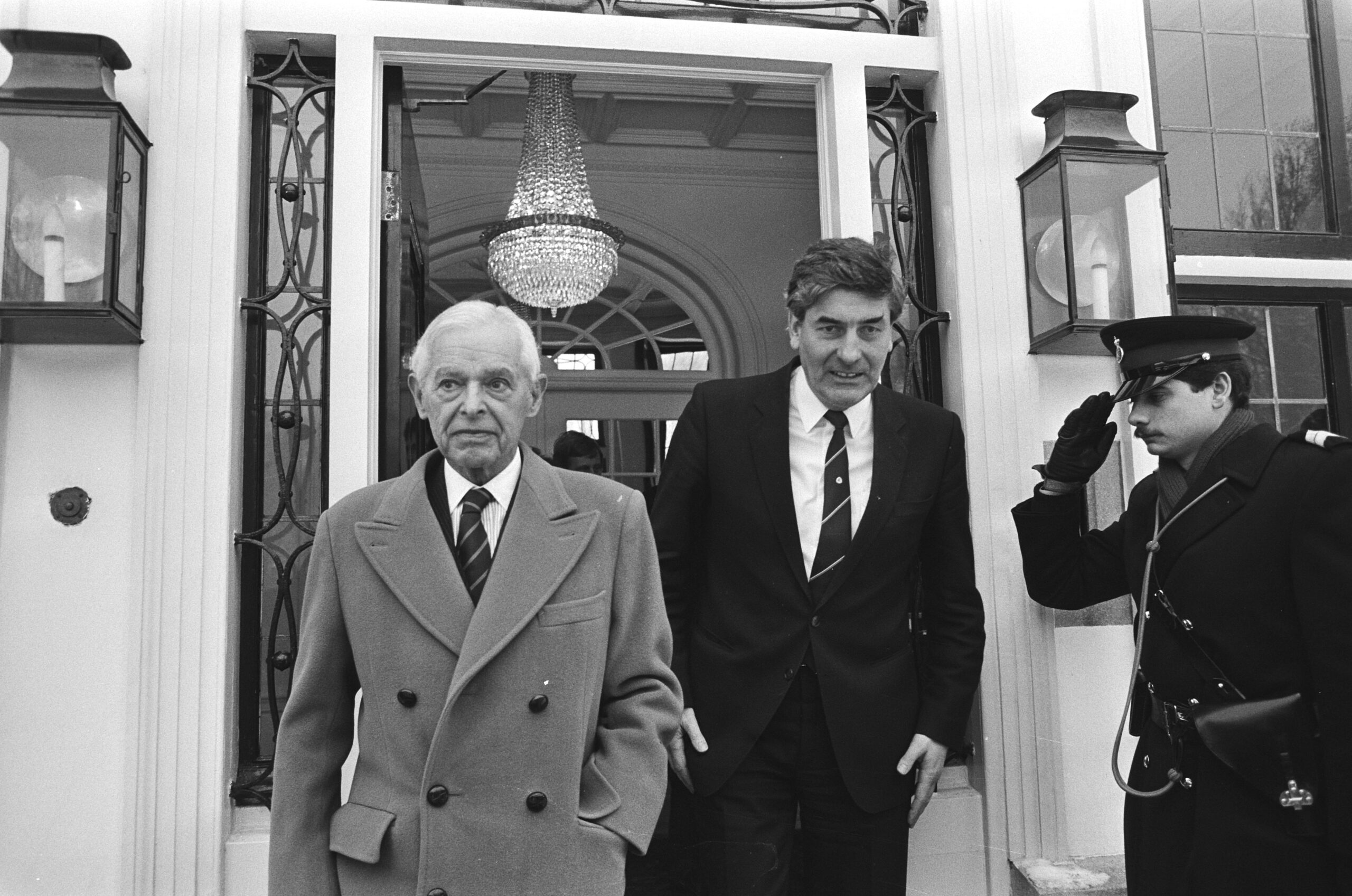
Nitze, left, visiting The Hague in January 1985 while serving as U.S. arms control adviser. (Rob Croes/Anefo, CC0, Wikimedia Commons)
July 16 will mark the 42nd anniversary of the famous “Walk in the Woods” conducted by Paul Nitze and Yuli Kvitsinsky, respectively the U.S. and Soviet lead negotiators for INF talks that, at the time, were stymied.
Faced with a calcified recalcitrance on the part of U.S. hardliners, the two men took a walk in the woods outside Geneva, Switzerland, where they outlined possible ways to break the negotiation impasse.
The ideas that Nitze and Kvitsinsky came up with never came to pass — neither the U.S. nor the Soviet Union were ready to undertake such drastic actions.
But their courageous stab at diplomacy at a time when neither side was talking to the other shook free the rust that had frozen their respective sides, lubricating the machinery of diplomacy, and set in motion the processes that led to Reagan and Gorbachev signing the INF Treaty some five and a half years later.
The key take-away from the Nitze-Kvitsinsky “Walk in the Woods” was that, when it comes to meaningful arms control, success is not immediate. The process of arms control must be seen in the long term.
It was also clear that fear fueled consideration of positive outcomes that eventually led to an equitable solution in the form of the INF Treaty.
There is no doubt in my mind that within the ranks of the Russian and U.S. diplomatic corps today are two men possessed of the vision and courage of Paul Nitze and Yuli Kvitsinsky who can, if given the opportunity, recreate the magic of the “Walk in the Woods.” That magic helped create the conditions for negotiations that helped pull the U.S. and Soviet Union from the nuclear abyss more than four decades ago.
But two hurdles must be crossed first. It is difficult to imagine a U.S. and Russian diplomat walking and talking today when, as Professor Sergey Markedonev, a fellow participant at the Vienna round table pointed out, official U.S. policy precludes even shaking hands with Russian diplomats.
It’s Up to the American People
To cross that bridge the U.S. government needs a signal from the American people that such behavior is not acceptable.
We need a modern-day version of the June 1982 Central Park million-person rally in support of nuclear disarmament and arms control and against nuclear war.
America has an election coming up in November where issues of our collective existential survival as a people and nation are on the line.
There is no more existential issue than that of nuclear war.
As was the case in June 1982, we, the people of the United States, need to send a collective signal to all who seek to represent us in the highest office of the land, that we will not tolerate policies that lead toward nuclear war.
That we insist on policies that promote nuclear disarmament and arms control.
That we demand that our diplomats begin talking with their Russian counterparts.
I’m tired of watching my life’s work melt before my very eyes.
It’s time to rebuild the foundations of our collective survival.
To make mainstream the cause of disarmament that once saved us from nuclear Armageddon.
Scott Ritter is a former U.S. Marine Corps intelligence officer who served in the former Soviet Union implementing arms control treaties, in the Persian Gulf during Operation Desert Storm and in Iraq overseeing the disarmament of WMD. His most recent book is Disarmament in the Time of Perestroika, published by Clarity Press.
The views expressed are solely those of the author and may or may not reflect those of Consortium News.
Here is a tribute to some of our favorite truth tellers who have kept us informed and sane:





